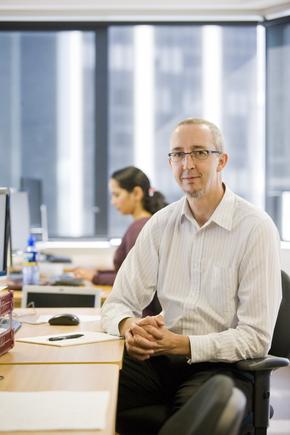As previously published on CIO.co.nz
Some of the greatest advances in the fight against the disease are happening not in the lab but inside the Kiwi software firm’s base in Wellington.
Volpara Solutions is helping save lives around the globe using AI technologies that are optimising breast screening to catch breast cancers earlier and reduce costs.
In New Zealand, Volpara recently begun supporting Auckland-based Mercy Radiology and in October signed a contract with its first public sector client, BreastScreen Central (Lower Hutt).
Volpara points out it can be difficult to isolate cancers in breast tissue that is particularly ‘dense’, as both appear white on X-rays.
To aid in the detection of breast cancer at an earlier stage, the Volpara Enterprise software, built on Microsoft Azure, uses artificial intelligence to automatically and objectively assess a women’s breast density.
Using this data, Volpara’s customers can identify patients with dense breasts that may benefit from supplemental imaging such as ultrasound. The outcome is identifying and treating the disease in its earliest stages, reducing the incidence of “interval cancers” (cancers that arise between breast screens), and lower treatment costs.
“Before, we were subjectively assessing breast density, but now we have an objective risk-assessment to help us identify those patients that need additional methods of screening to mammography, in order to increase detection of breast cancer,” says Dr Sugania Reddy, radiologist at Auckland’s Mercy Radiology.
“In patients with high breast density, the mammogram sensitivity is reduced for detection of breast cancer. Using Volpara software we recognise the need immediately for supplementary screening of these patients and therefore increase our ability the find these cancers at an earlier stage, resulting in an overall better prognosis.”
Volpara’s analytics software uses Microsoft Power BI to analyse the quality of every mammogram.
Having access to this analysis helps radiographers understand areas where they can refine their techniques to produce better mammograms.
The software monitors more than 100 performance metrics to guide radiographers on enhancing their positioning skills, making examinations more comfortable and capturing higher-quality images. This simultaneously provides quality control for breast screens and helps decrease costs by reducing the need for technical recalls.
Dr Ralph Highnam, Volpara chief executive, was looking for a path to explore his interest in AI. His former professor at Oxford University encouraged him to consider finding a way to improve breast screening standards.

he result was Volpara, now an ASX-listed business whose solutions are used in private hospitals around the world, from the US to Japan, Australia and New Zealand.
Highnam, meanwhile, says computer-aided detection is the next challenge for breast screening software developers
“It’s still early days, but this is the next major frontier in combating breast cancer, which we hope will help reduce both global radiologist shortages and waiting lists. Breast cancer affects not only millions of women worldwide but also their families, friends and colleagues, and we look forward to finding more ways to optimise early detection and treatment.”
Volpara is working with Microsoft through the latter’s Co-Sell programme which will help promote it to customers across the globe.
Through this programme, Volpara is able to access marketing and communications support, technical assistance and the services of a specialist business development manager to help it use Microsoft’s global networks to expand into other markets and business areas.
Microsoft has facilitated a trial with healthcare providers in Singapore through this programme.
“While everything our partners do has the potential to make people’s lives better, it’s not often you get the opportunity to work with a business that is literally saving lives the way Volpara does,” says Ryan Tarak, partner development manager for Microsoft New Zealand.
“We’re really excited to be helping Volpara assist countless more breast cancer patients worldwide, especially as it moves into the next phase of the fight against breast cancer, using data-driven research.”


